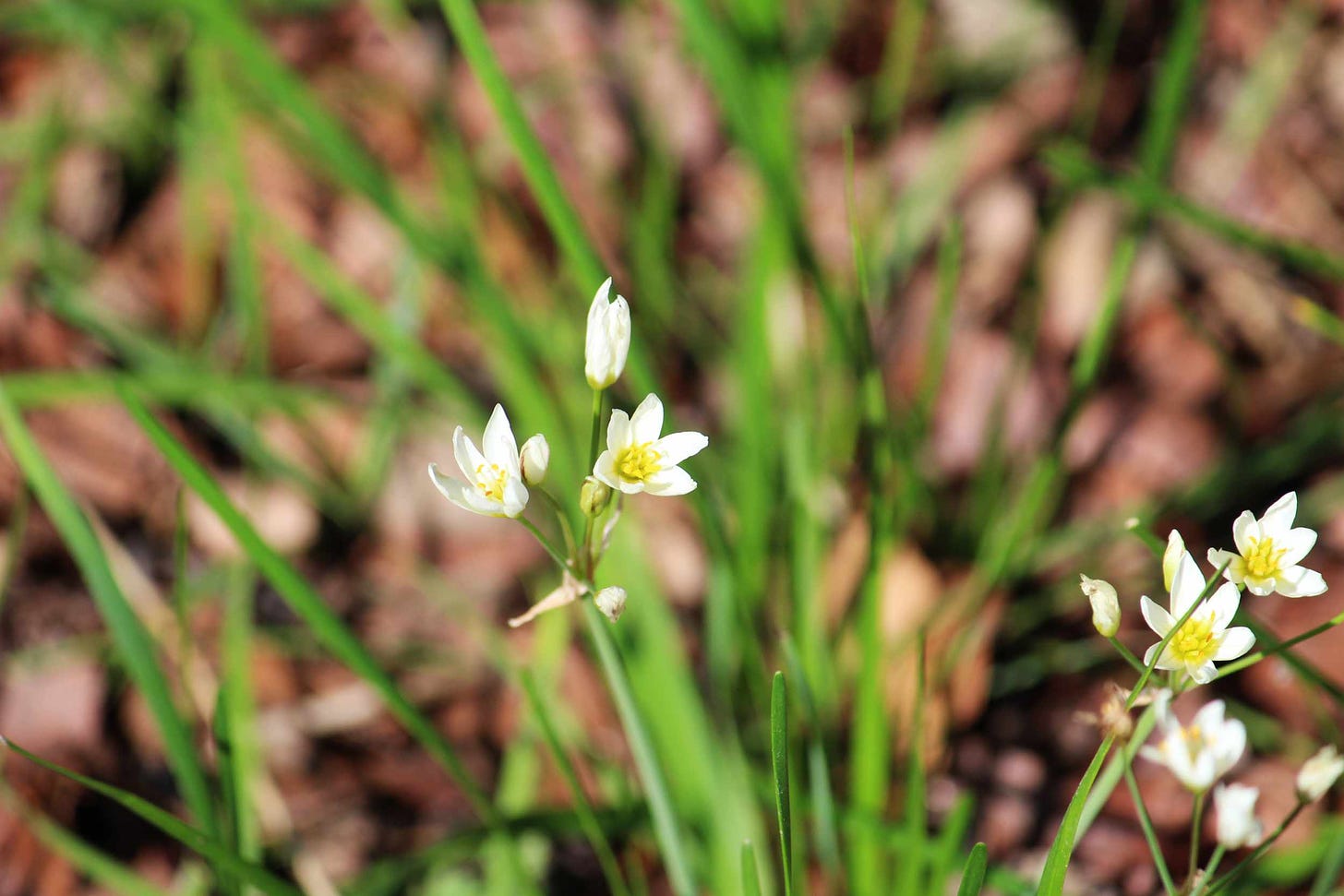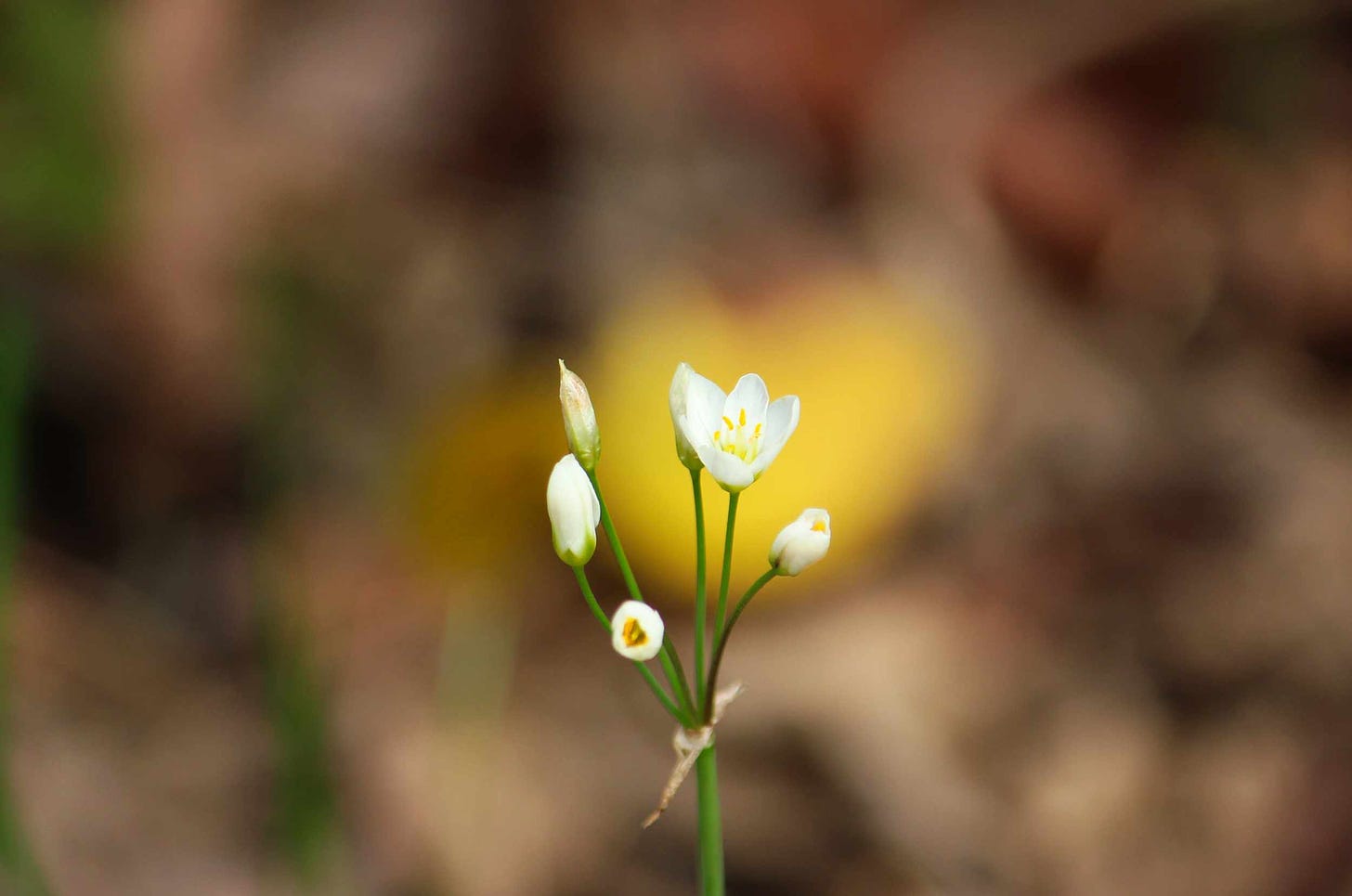Crow Poison
One of the plants I spotted blooming on my recent walk was a little white spring flower with grass-like leaves. I could tell as soon as I saw it that it was in the lily family, that it wasn't Star of Bethlehem (a common invasive) and beyond that? I had to go look it up.
I cheated a little on that, and used wildflowersearch.org set to my location, and a quick scroll through the likely flowers blooming got me on the right track for a visual match to Nothoscordum bivalve which is also known as Crow Poison, or somewhat more mundanely as False Garlic. I confirmed my identification with my Wildflowers of Texas book, and then got curious.

The delightful little plant is in the allium family, as you might have guessed from one of the common names, but it has no characteristic sulfur-compound-driven oniony odor. Hence the other, less picturesque, name.

Curious of the origin of the common name, I started to do a little digging. Missouri's wild flower guide has this to say about it, which made me laugh a little. I was unable to find a solid source of the name Crow Poison, only references anecdotally to a Native American use of the plant for poisoning crows that were eating crops.

However, as I was poking about, I discovered that the plant has been evaluated for anti-microbial properties, and has done well against an antibiotic-resistant bacteria, and biofilms, which are notoriously hard to deal with. How interesting! Pretty, and potentially very useful!




